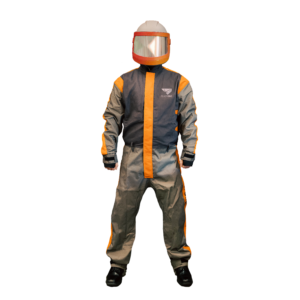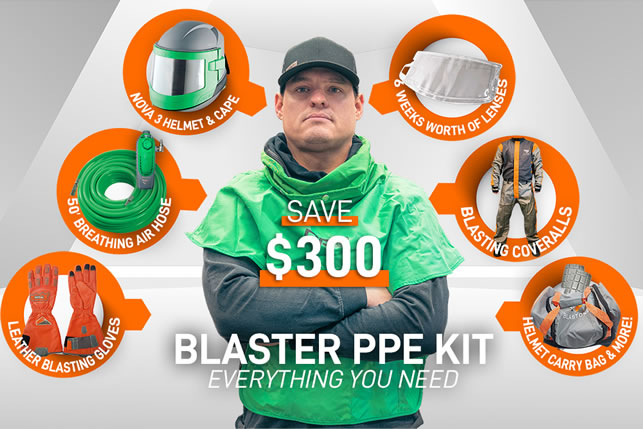Steel Grit Blasting Abrasive Supplier
Steel grit blasting abrasive media, is available in a range of different hardness grades. A typical grit grade is GL25. The G stands for grit. The L stands for a mid-range hardness. The 25 in the grade name stands for the size. Steel grit is available in a range of sizes, from G12 to G120. Steel grit sizing uses a mesh sizing naming convention similar to that used for sandblasting sand – the smaller the number, the bigger the grit size, the bigger number, the smaller the grit size.
Most steel grit blasting takes place in manufacturing or fabrication facilities. Site blasting using steel grit does place sometimes. The restricting factor for site blasting with steel grit is the extensive amount of recycling equipment needed to justify using it on site. Steel grit is three to four time more expensive than sandblasting sand and recycling is essential for cost efficiency. Bridge blasting often uses steel grit – with specialist crews using specialist recycling equipment. Air blasting systems use the harder grades of steel grit, and wheel blasting machines use the softer grades of steel grit. Typical items blasted with steel grit in a manufacturing or fabrication facility include industrial building framework, agricultural machinery, pipework, or castings.
Showing the single result
-
The High Quality Steel Grit is a top-performing cleaning and descaling abrasive media, predominantly used in airless wheel blast machines and blast rooms. Available in multiple grades and sizes, this steel grit offers a unique feature where its sharp edges gradually round off during multiple recycling processes, making it a cost-effective and efficient option for various abrasive blasting applications.
- Manufactured cast steel grit abrasive
- Used mainly in airless wheel blast machines & blast rooms
- Blue grey, angular granules (GL = blue, GH = grey)
- Can be recycled many times
- High performance, cleaning and descaling abrasive
- Sharp edges gradually round over as it wears
- Standard GL and GH hardness grit
- Special GP hardness and other specifications available
- Manufactured to conform to: SAE J444, SAE J1993, SFSA 20-66
- Hardness: GL = 56-60 HRc, GH = 60-65 HRc
- Packed in 25kg bags
Understanding Steel Grit Hardness
Hardness is a resistance of the metal to plastic deformation – usually by indentation. This term may also refer to a metal’s stiffness. This term may also refer to a metal’s stiffness, resistance to scratching, abrasion or cutting.
Types of Steel Grit
There are different grades, sizes and applications with steel grit. BlastOne can help you decide which steel media is appropriate for your usage and indeed suggest which wheel machine or similar is most appropriate for your applications.
Chilled Iron Grit
Used for manual air-blasting. It is made by quenching with cold water while red hot to produce a more brittle particle which will split on impact. The additional particles hit the steel surface and thus increase blasting speed. They will always maintain their sharp edges providing a speed increase of 8-12% compared with standard steel grit. The angular shape gives a more consistent profile and superior coating adhesion.
GL Steel Grit
Loses it sharp edges during shot blasting and is best suited to descaling and surface preparation applications.
GH Steel Grit
Having maximum hardness, GH remains angular. Mainly used in blastooms where working requirements take precedence over cost price considerations (eg – with rolling mill cylinders or when a special finish is required.) Mainly used with air abrasive blasting in blastrooms.
APPLICATIONS
– Steel shot blast media is a general-purpose abrasive well suited to shot peening applications
– Wheel machines
– Ship manufacturing and maintenance
– Railcar manufacturing and maintenance
BENEFITS
– Steel shot’s round shape offers a uniform structure and provides optimum impact resilience
– Leaves a uniform surface profile
– High resistance to impact fatigue
– High bulk density
– Low friability
– Low dust levels – improves safety and visibility conditions for blasters and helps optimize speed and productivity
– High recyclability – Carbon Steel Shot does not completely shatter when it hits a surface and can therefore be recycled hundreds of times
BlastOne’s regular shaped, sized and weighted steel shot will give excellent results over and over again. Our competitor’s highly irregular shaped, sized, and weighted steel shot will produce poor result taking a longer time and diminishing profitability.
 My Account
My Account



